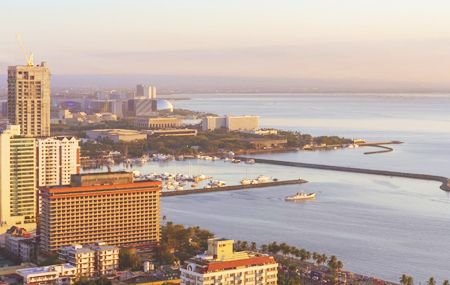
Compare the prices of all rental car companies
Subscribe for exclusive offers and deals!
4.2 / 5
4.2 / 5
The Philippines is a popular travel destination for many reasons. From the stunning beaches of Boracay to the majestic mountain ranges of the Cordillera, the country has something to offer for everyone. Renting a car is a great way to explore this diverse landscape and experience the best of the Philippines.
Car rental companies offer a wide range of vehicles to suit all budgets and preferences. Many offer competitive rates and discounts, making it an affordable way to get around. With a car, you have the freedom to explore the country at your own pace and discover hidden gems off the beaten track. Renting a car in the Philippines is the perfect way to make the most of your trip.

Other cities worth mentioning include Bacolod, Tagaytay, Bohol, and Palawan. Each city offers a unique experience and is a must-visit destination for any traveler looking to explore the Philippines.
Car rental prices in the Philippines vary depending on the type of car you are looking to rent, the length of your rental period, and the rental company you choose. Generally, prices start from around PHP 1,000 per day for a small economy car. Prices can go up to around PHP 10,000 per day for a luxury sedan or SUV.
If you are looking to save money, you may want to consider renting a car for a longer period of time. Many car rental companies offer discounted rates for weekly and monthly rentals. Additionally, you can often find special offers and discounts online if you book in advance.
When renting a car in the Philippines, make sure to check the rental company’s insurance policy. Many companies offer additional insurance coverage for an additional fee. It is important to make sure you are covered in case of an accident or theft.
Overall, car rental prices in the Philippines are quite reasonable. By doing some research and taking advantage of discounts and special offers, you can find a good deal on a rental car.
By following these simple tips, you can save money on your car rental in the Philippines. Be sure to book in advance, look for deals, compare prices, choose a smaller vehicle, and opt for a longer rental period.
Driving in the Philippines is fairly straightforward, but it is important to be aware of the local laws and regulations. All passengers must wear seatbelts, and it is illegal to use a cell phone while driving. The legal limit for alcohol consumption while driving is 0.05%, and the speed limit is 40 km/h in urban areas and 80 km/h in rural areas. Foreigners are allowed to drive with an International Driving Permit (IDP) for up to 90 days, after which a Philippine driver's license must be obtained.
The following questions and answers are a selection of the most popular questions for Philippines. If you do not find the answer to your question, have a look at the Frequently Asked Questions page or contact us.
When visiting the Philippines, there are a variety of parking options available. Depending on the city, there are both paid and free parking areas. Most cities offer metered parking, where you can pay for parking on the street. Some cities also offer parking garages and lots with both short and long-term options. In some areas, there may be private parking lots available for a fee. Additionally, some hotels, malls, and other businesses may offer free parking for customers.
Yes, there are toll roads in the Philippines. These roads are known as expressways and are managed by the Toll Regulatory Board. The toll roads are divided into two main categories: Open System and Closed System. The Open System allows drivers to pay their tolls at the toll plaza, while the Closed System requires drivers to buy an RFID tag to pay for tolls. The RFID tag is attached to the vehicle and is scanned at the toll plaza. The toll fees depend on the type of vehicle and the distance traveled.
In the Philippines, they drive on the right side of the road.
The currency in Philippines is the Philippine Peso (PHP).
The Philippines uses the Philippine Standard Time (PST), which is 8 hours ahead of Coordinated Universal Time (UTC+8). The Philippine Standard Time is the same as the China Standard Time (CST), Singapore Standard Time (SGT), and Malaysia Standard Time (MST).
The official spoken language in the Philippines is Filipino, which is based on Tagalog. Filipino is the national language of the Philippines and is spoken by the majority of the population. It is also one of the two official languages of the country, the other being English. Filipino is a standardized version of Tagalog, which is an Austronesian language that originated from the area around Manila. Filipino has been influenced by Spanish, English, and other local languages, and it is the primary language of instruction in school.
[EST] Mon - Fri: 03:00 - 16:00 Sat - Sun : 03:00 - 11:00
[GMT] Mon - Fri: 08:00 - 16:00 Sat - Sun : 08:00 - 16:00
Mon - Fri
Sat - Sun
03:00 - 16:00
08:00 - 16:00
[EST]
[GMT]
03:00 - 11:00
03:00 - 16:00